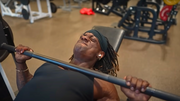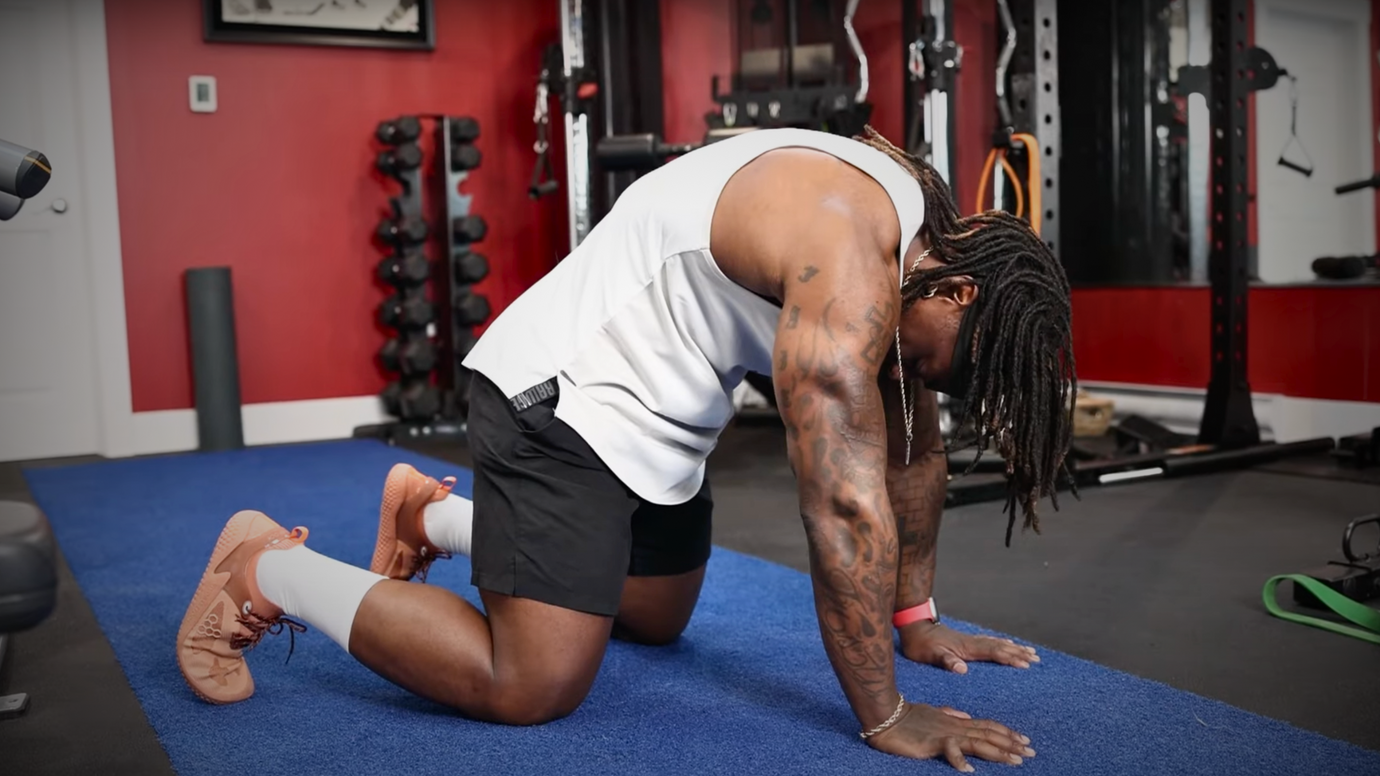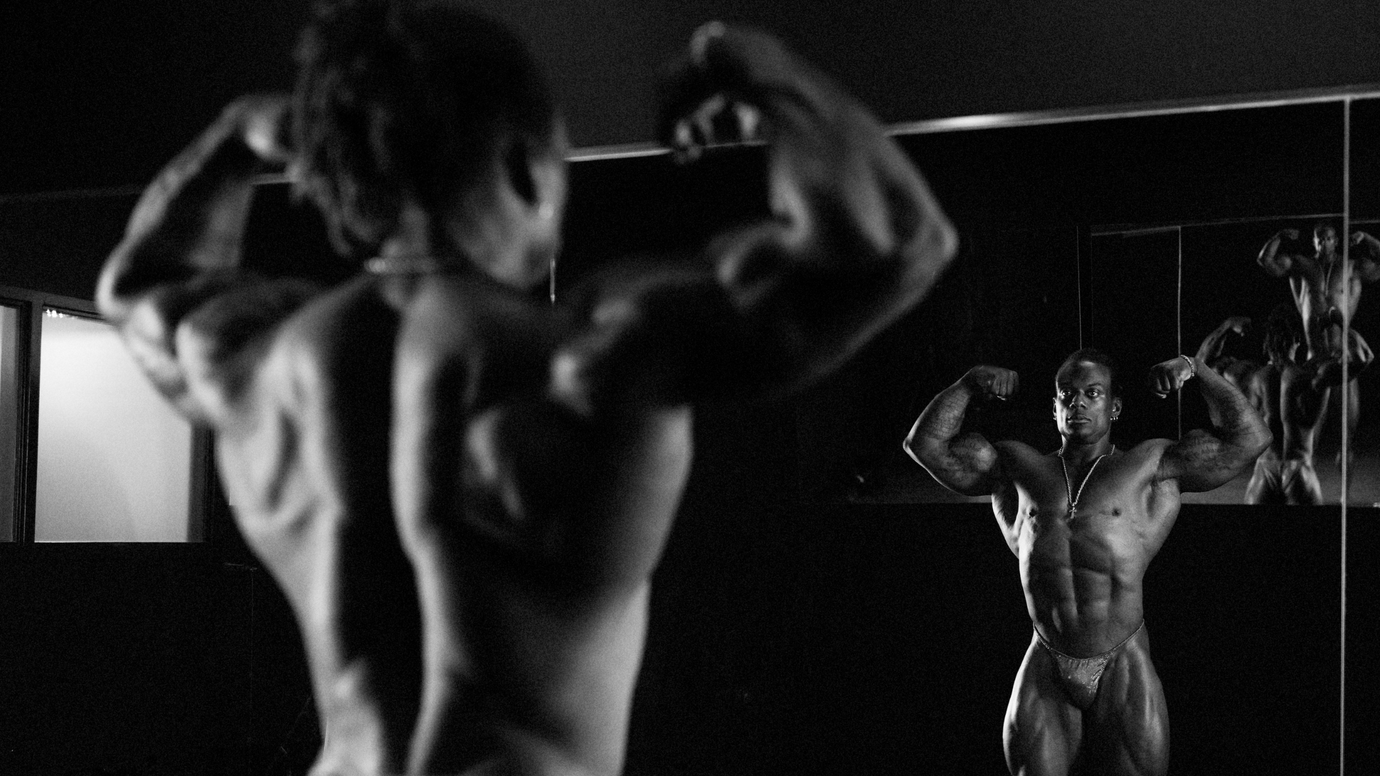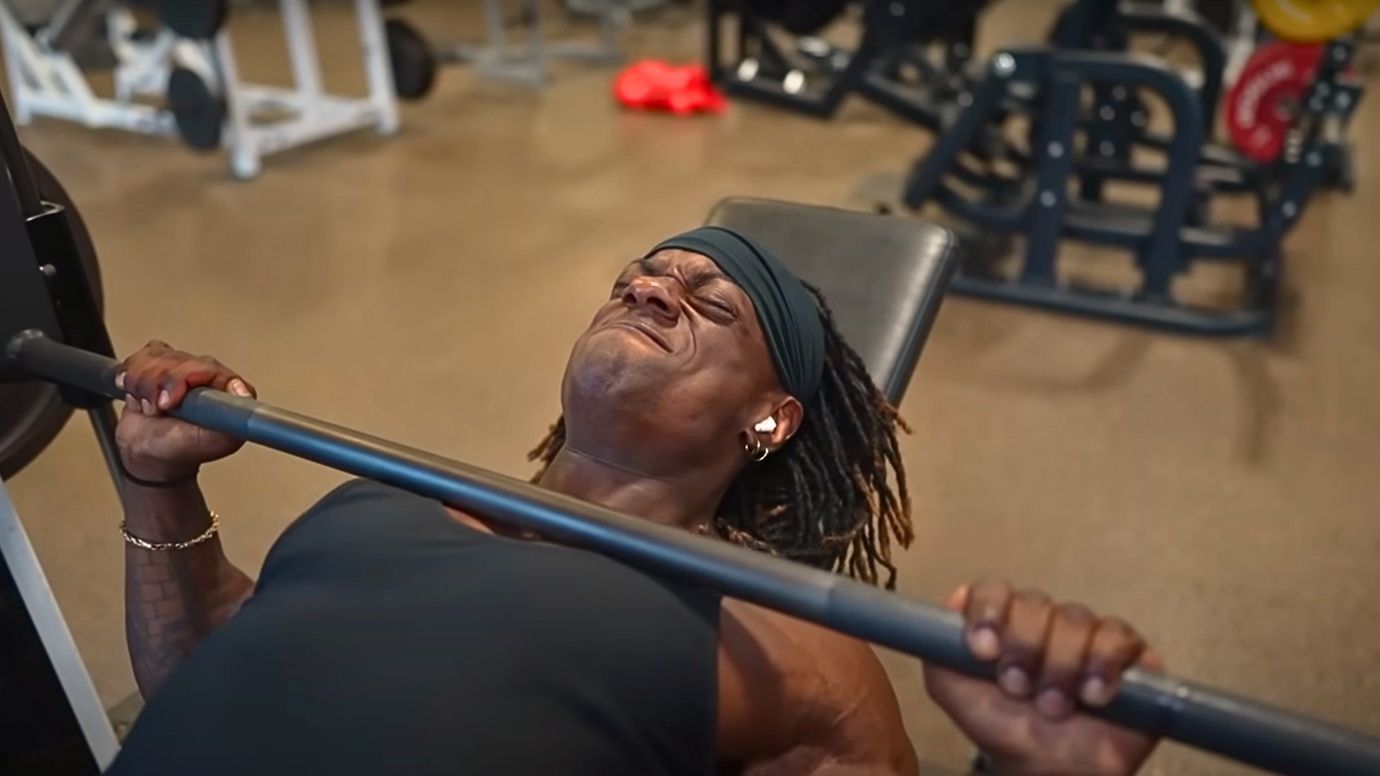Stength Training After 40: The Ultimate Frequency & Recovery Guide
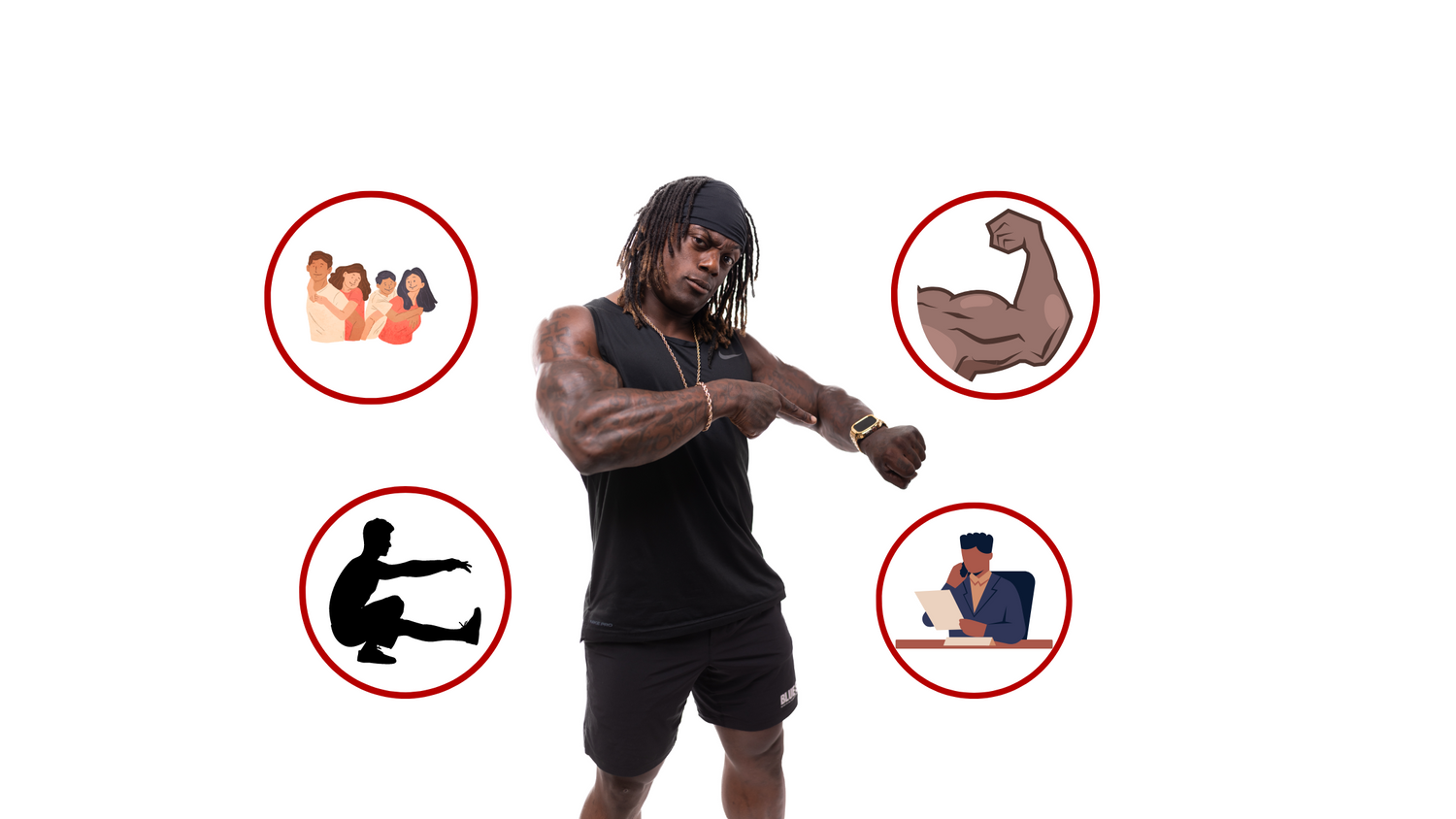
When you hit your 40s, making strength training a top priority becomes key, even more so than in your younger days. In this blog post, I will give you the exact steps you need to be taking to optimize your training and lifestyle to live as long and as healthy as possible.
We're all going to age. So, whether you're 30+ or 40+ this is information that you need to know and incorporate into your life. I'll be going over the intricacies of training, recovery, and how to balance it all around your life and responsibilities.
To hear me break down these concepts watch this video ⬇️ Otherwise read on.
Strength Training After 40: Ultimate Guide

Importance of Gym Priority Alongside Family and Career
As life progresses, things change. Family, career, and responsibilities take the front seat, but hitting the gym remains a priority.
Let's make this crystal clear: making money and family come first, but without good health, how can you manage everything else? Training and recovery should be high on your list.
When deciding on a training split, go for one that you can stick with. As you age, time becomes more precious. I used to spend 3 hours in the gym, doing cardio, training, chatting - those days are behind me now.
This is why we need to consider training splits.

Training Splits
1.) Upper Push Pull Lower Training Split Explained
When I program I'm most likely to lean towards an Upper Push Pull Lower Training Split.
When it comes to Push Pull Upper Push Pull we're only doing four exercises, but we're super setting them.
- Imagine you're doing pull-ups combined with incline chest press,
- followed by a 15° press paired with seated rows,
- and then a cable fly or pec deck, along with a basic pull.
These form a series of three exercises. After completing this super set, take a break.
You're essentially combining three exercises into one set, and doing three challenging sets of each. If you add a tricep and bicep super set as the fourth exercise, you'll have a total of four exercises or super sets, each with three intense sets.
That's a total of 12 sets.
Assuming each exercise takes about 2 minutes back-to-back, with an additional minute for chest and back, followed by a 2-minute rest, you'd spend 4 minutes per set.
That sums up to 48 minutes, almost an hour, for your gym session, from start to finish.
2.) 4-Day Training Split
When it comes to a training split there are two parts to consider:
- There's the training split that you can actually commit to
- There’s the necessary amount of time you need to be in the gym to see results
I recommend anything between 3 to 5 days a week in the gym. But the sweet spot for me is a 4-day split. Why do I say 4?
With a 4-day split, you can easily train each muscle group two times a week if building muscle is still a priority list now.
-But let's get something straight, building muscle and being strong should be on your training priority list until you are in the grave.
Though it can be challenging you can still stay healthy with the 3 days a week minimum and reap all the great benefits. Slowing down your risk of heart disease, diabetes, IES, all those things.
But for me at 40 years old, 4 days a week is very easy to commit to.
When you start pushing to 5 or 6 days a week it gets hard to find the time.
3.) Emphasis on Leg Training Frequency
As we get older and get less active we start to lose muscle. If you don't prioritize your legs that is probably the first place that it will go.
To those out there who don't want to lose their legs so quickly, training them twice a week is going to help slow down the process.
If legs aren't a priority you can definitely train legs once a week. At that point you can do a Push Pull Legs Push. This means you do a Push, then a Pull, then Legs and then on your fourth day you do a Push Pull Super Set. And there's your 4 Day Split.
Now when it comes to splits and time management we want to be somewhat of a minimalist.
The muscles have about one to three actions they do. So, you can get away with doing one to three exercises for each muscle group.
We want to be a minimalist in the gym because when we are a minimalist in terms of training frequency we have more time to recover. And don't worry, we'll get to recovery in a little bit.

Reps, Tempo, and Intensity Recommendations
Reps and tempo play a crucial role in your workout routine.
So, let's simplify it: aim for 10 to 15 reps for an effective workout. Each rep should last between 2 to 8 seconds. Focus on a 2 to 3 second negative movement for a good stretch, followed by a 1 second positive movement.
These recommendations apply to all ages - pushing yourself to failure is nothing to shy away from.
The number of times we push ourselves to failure really matters for progress. As we get older, recovery takes longer, so always training to failure might slow down our progress.
I usually aim for hitting around 7 to 8 RP or a 2 to 3 R to build muscle effectively without pushing my body too hard. Making sure you go through the full range of motion is super important, especially as we age, to keep flexible and avoid pain.
Remember, each rep should go from full stretch to full squeeze.
But before starting your exercises, make sure to warm up properly.

Warm-Up and Full Range of Motion Importance
Starting off with a quick five-minute walk can be a great way to get your blood pumping.
When you're doing your warm-up sets, focus on controlled movements and hold that stretch for a bit to really activate those muscles.
Focusing on the stretch during your first set can really help activate your muscles and get that blood flowing. And this technique is especially great for effectively stretching your muscles under load.
But what matters most is performing each movement correctly.
If need be, skip all those extra warm-up sets and focus on doing each rep right.
When it comes to cardio, keep it simple. Try to include some fun outdoor activities and Zone 2 cardio for at least 150 minutes every week. This well-rounded approach helps with recovery and boosts your heart health, which is awesome for your overall well-being.
Incorporating Strength Blocks in Training
In our training routine, it's important to include Strength Blocks. But what does that mean exactly? It's all about honing in on hypertrophy and strength training.
When I say strength training, I'm not talking about maxing out with one-rep sets. I'm talking about dialing down the rep range, picking up the pace, and lifting heavier weights – aiming for around 85% of our one-rep max.
This method really helps us get stronger.
Bone Strength
Strength training isn't just about beefing up muscles; it's also key in keeping our bones strong.
The strength we build now will affect how mobile we are in the future. We want to make sure that as we get older, simple tasks like going up stairs or standing up from a chair are still easy to do.
Strengthening your muscles and bones early on is crucial for dodging injuries down the road.
When the elderly break a hip, it's not always just about the fall – a lot of the time, it's because their muscles and bones are too weak to hold them up.
Investing in strength training now is like saving up for our future well-being, so we can stay independent and nimble as the years roll by.
By focusing on strength training, we're basically fortifying our bodies to steer clear of unnecessary injuries.
And if we're going to prioritize our training, we have to prioritize our recovery.

Recovery
The Crucial Role of Sleep in Recovery
Let's chat about what we can control right now, especially when it comes to recovering after workouts.
Sleep is one of the most important aspects of recovery.
Even with all our daily tasks like work, kids, etc., we have to put sleep first. That means setting aside time and getting things done so that when it's bedtime, we're ready to hit the hay.
That includes wrapping up work, ditching distractions like phones, and letting our minds relax.
Making sure we get enough rest is crucial for our bodies to recharge. This rule isn't just for the young ones—it gets even more crucial as we get older.
While we might have had our sleep routines down pat when we were younger, as we age, we need even more shut-eye.
Benefits of Yoga and Active Stretching
To boost your post-workout recovery, stretching those muscle groups you've been working is a must. After your routine of four exercises with three sets each (that's 12 sets total), don't forget to add in some stretching.
Stretching helps loosen up your muscles and improve your flexibility. And guess what? You don't need a ton of time at the gym for this. Just spend 5 to 10 minutes after your workout targeting the specific muscle groups you've been focusing on - it really pays off.
Extra Tips:
- Stretching in the shower when your body's warmed up can help relax those muscles even more.
- Throughout your day, sneak in some stretching whenever you can, even while you're sitting at work. Whether it's your back, your chest, or any other muscle group, working some stretches into your daily routine is key for proper recovery and overall success in the gym.
Just remember, recovery isn't just about resting or sleeping - it's also about staying mobile and giving those muscles a good stretch.
I'd recommend trying out some yoga or active stretching as well.
Aim to join a class once a week if you can swing it, or practice on your own if classes don't fit your schedule.
It's also great to get active outside the gym - play with your kids, do some yard work - anything that keeps you moving. These activities help you stay functional and maintain an active lifestyle.
The Importance of Regular Massage Therapy or Osteopathy
Regular Massage Therapy or Osteopathy is crucial for addressing knots in scar tissue that can develop from muscle building, training, poor sleeping positions, prolonged sitting, or other factors causing discomfort.
While it can be pricy, scheduling these sessions every four to six weeks is absolutely recommended.
Taking good care of your body is like a smart long-term investment versus splurging on random stuff. Look after yourself for the long haul instead of just pampering for the moment.
Wrap-Up and Encouragement for 40+ Training Approach.
In conclusion, remember that how you manage your training and your approach to it will echo into the future. Making smart, strategic decisions now will help you prevent injuries and keep your body strong and healthy. It's never too late to start training or to change things up, no matter what your age. So start today! Check out my 1 on 1 Online Coaching to start your journey towards a stronger body and longer life!
Elevate Your Training Today!
If you're ready to maximize your growth and finally achieve your dream physique, check out some of the effective resources on my website, Jonnieshreve.com.
🔥Private 1 on 1 Online Coaching
, you can find it all!
And if you’re looking to hit the stage this year, check out my Hardcore Training Contest Prep! 💪🏾




